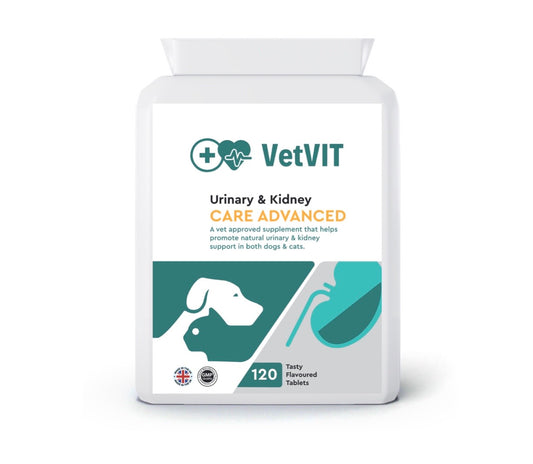Introduction to FIP in Cats!
Cats are amazing companions and bring joy to our lives. As cat owners, we want them to live happy and healthy lives. Unfortunately, sometimes cats can develop illnesses that are difficult to diagnose and treat. One of these diseases is FIP in cats. If you're a cat owner or simply curious about feline health, this blog post will provide you with everything you need to know about FIP in cats! From the first signs of the disease to treatment options and survival rates, we've got you covered. So let's dive into the world of cat FIP together!
What is cat FIP?
Feline Infectious Peritonitis, known as FIP in cats, is a viral disease that affects domestic and wild cats worldwide. This infectious disease is caused by a coronavirus (that dreaded word we all have come to detest) that attacks the cat's immune system, leading to inflammation and damage to different organs such as lungs, liver, kidneys and brain.
There are two types of FIP in cats: wet (effusive) FIP and dry (non-effusive) FIP. Wet FIP occurs when fluid accumulates in the cat's abdomen or chest cavity due to inflammation of the blood vessels. On the other hand, dry FIP refers to cases where there is no visible accumulation of fluids but rather granulomas forming on various organs.
It's important to note that not all cats exposed to feline coronavirus will develop FIP. In fact, most infected cats will only experience mild symptoms similar to those seen with an upper respiratory infection and may recover without medical intervention.
However, for some unlucky kitties with weak immune systems or genetic predisposition towards developing severe inflammatory reactions against viruses like coronaviruses; this can lead them down a path of developing lethal complications associated with FIP.
What cause cat FIP?
Feline Infectious Peritonitis (FIP) is caused by a coronavirus that affects cats. The exact cause of why some cats develop FIP while others do not isn't yet clear. However, it is believed that certain factors such as genetics and the immune system play a crucial role in determining whether or not a cat will develop FIP.
When a cat gets infected with the virus, its immune system tries to fight off the infection. In some cases, the immune system fails to eliminate the virus completely and becomes overwhelmed which results in an abnormal inflammatory response leading to FIP.
It's also important to note that stress can weaken your cat's immune system making them more susceptible to viral infections like FIP. Kittens born from mothers who were exposed to coronavirus have an increased risk of developing FIP later on in life.
There is still much research needed into understanding what exactly causes FIP but knowing about these possible contributing factors can help you take steps towards prevention.
What are the first signs of FIP in cats?
Unfortunately, the symptoms of FIP can be difficult to recognise as they are often similar to those of other illnesses. However, there are certain signs that may indicate your cat has contracted FIP.
The first sign of FIP in cats is usually a fever that doesn't respond to antibiotics or other medication. This fever can last for several days and may go up and down before becoming persistent.
Another common symptom of FIP in cats is loss of appetite which can lead to weight loss over time. Your cat may also become lethargic and lose interest in activities it once enjoyed.
If your cat has contracted the wet form of FIP, you may notice fluid accumulation in its abdomen or chest which can cause difficulty breathing and discomfort.
Other symptoms include eye problems such as cloudiness or inflammation, neurological issues like seizures or paralysis, and anaemia due to decreased red blood cell production. Often in the later stages of FIP in cats, you may notice jaundice (yellowing) of the gums and other membranes.
It's important to note that not all cats with these symptoms have FIP, but if you suspect your cat might have the disease, it's crucial to consult with a veterinarian as soon as possible. Early diagnosis increases the chances for successful treatment options.
Can a cat with FIP survive?
Feline Infectious Peritonitis (FIP) is a viral disease that can cause severe and often fatal immune-mediated inflammatory reactions in cats. Until recently, FIP had no known cure, and the survival rate for cats with this disease was very low.
The prognosis of FIP depends on the type of virus involved, as well as the age and overall health of the cat. Cats with dry form FIP may live for several months or even years if supportive care is given to manage their symptoms. However, wet form FIP progresses rapidly, causing severe fluid buildup in body cavities that ultimately leads to death within weeks.
In recent years, there has been some incredible advances in treatment and there now is a treatment regime that has shown significant results with incredible survival rates. The treatment is intense and also unfortunately very expensive but thankfully FIP in cats is no longer a death sentence for cats.
In certain circumstance where the disease process has developed too far or due to costs, the treatment route may not be an option. Therefore; it's important to work closely with your veterinarian to provide palliative care aimed at keeping them comfortable throughout their remaining days
How can you treat FIP in cats?
In August 2021, Remdemsivir became legal in the UK and has been used very successfully in the treatment of FIP in cats. Treatment is usually tailored to each individual case so it is important to work closely with your vet. Unfortunately treatment is currently very expensive, and often the costs will make treatment non-viable for some cats with FIP. The hope is that in time, as with all drugs, the patent will become available to other drug companies and one day treatment for FIP in cats is an affordable option for almost all cases.
In cases where Remdemsivir is not possible, palliative care with medications to relieve the symptoms is an option until such time as your cat's quality of life deteriorates and then euthanasia is the kindest decision.
Remember that early detection and intervention may increase your cat's chances of survival since delaying treatment could lead to irreversible organ damage or even death. Regular wellness visits with your vet can help catch any potential health problems before they become severe.
As a responsible pet owner, it's crucial to stay informed about common feline diseases like FIP so you can take preventative measures or seek prompt medical attention if needed.
Conclusion on FIP in Cats!
FIP in cats is a serious and often fatal disease that affects many feline companions. Although there is currently no cure for this illness, early detection and supportive care can help to prolong the life of affected cats and improve their quality of life. Cat owners can also take proactive measures to prevent the spread of FIP by keeping their cats up-to-date with vaccinations and practicing good hygiene when caring for sick or multiple cats.
By being aware of the signs and symptoms of cat FIP, seeking prompt veterinary attention when needed, and taking preventative measures where possible, we can all do our part to protect our beloved feline friends from this devastating disease. Remember that every cat deserves a chance at a happy and healthy life – let's work together to make sure they get it!
Dr. Alan MRCVS





